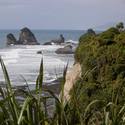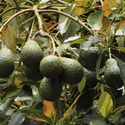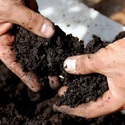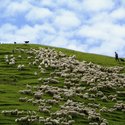Soil – it’s much more than dirt. Soil keeps us alive. Without soil, we would be hungry, thirsty, naked, homeless and breathless. Soils differ from location to location and are a range of colours. Around 25% of everything alive on Earth uses soil as a habitat1.
Soil is also where we dig for treasure. Pick up a spade and see what educational treasures exist in the world beneath our feet.'
Below are resources for primary teachers related to soil in the Planet Earth and Beyond strand of the New Zealand Curriculum. The first two soil themes (habitat and differences) are suitable for NZC levels 2 and up. The remaining themes (nutrients and climate change) are suitable for NZC levels 3 and up.
The students thought ‘dirt’ was pretty boring until their eyes were opened to ‘soil’ and what lies beneath the ground. They were fascinated to discover roots, glass, worms and clay. What made a huge impact on them was how important soil is to us and the world in which we live.
Teacher
Themes
Soil is a habitat
Soil is a habitat
Niches within earthworms’ habitat
Activity: Observing soil microbes
Activity: New Zealand soil creatures
Did you know there are more things living under the ground in the soil than there are people living above ground? I was amazed by that! It is a bit freaky.
Cate, year 2 student
Soils differ from place to place
Soils are all different
What is in soil?
Soil properties
Soil names
Video: Important soil properties
Activity: Observing soil differences
Activity: Dig a hole
Activity: What makes up soil? (includes an interactive graphic organiser)
Activity: Visual soil assessment
We dug a MASSIVE hole, and I didn’t know the ground went that far down. When we went deeper, we found different soil like clay2, and it was harder and crumbly. I loved being a scientist.
Flynn, year 2 student
Soil and nutrients
Managing nutrients
Focusing on phosphorus
The role of clover
Video: Phosphorus
Video: The importance of clover
Interactive: The terrestrial nitrogen cycle
Activity: Nutrient pollution
Activity: Water and nitrate leaching
Soil is spectacular because it is the main thing to help trees to grow, and trees give us oxygen3 to breathe. If we didn’t have soil, it could get tricky.
Alyssia, year 2 student
Soils and climate change
Inhibiting nitrous oxide emissions
Farming and environmental pollution
Activity: Farming and environmental issues
Teacher support materials
Online professional development
This online PD session recorded on 3 June 2015 introduces agriculture and horticulture teachers to resources on the Science Learning Hub that support three particular aspects – soils, plant reproduction and management practices.
SLH and agriculture/horticulture
Topic planners and Unit plans
Topic planners offer a suggested pathway through some of the soils resources on the Science Learning Hub.
Soil theme – Is all soil the same?
Soil theme - Nutrients
Unit plans on earthworms, a common soil animal:
Earthworms (lower primary)
Earthworms (upper primary)
Nature of science
It is important in science to not only build students’ knowledge and understanding of science but to support them to make connections between science concepts and the world around them. Soil is an ideal context for this as it links to many other aspects of science as well as global and local issues, such as growing food and farming practices.
Useful link
Visit the Hub’s Pinterest board: We dig soil.
- habitat: The natural environment in which an organism lives.
- clay: A naturally occurring fine-grained material formed from the chemical weathering of feldspar minerals found in rocks.
- oxygen: A non-metal – symbol O, atomic number 8. Oxygen is a gas found in the air. It is needed for aerobic cellular respiration in cells.







